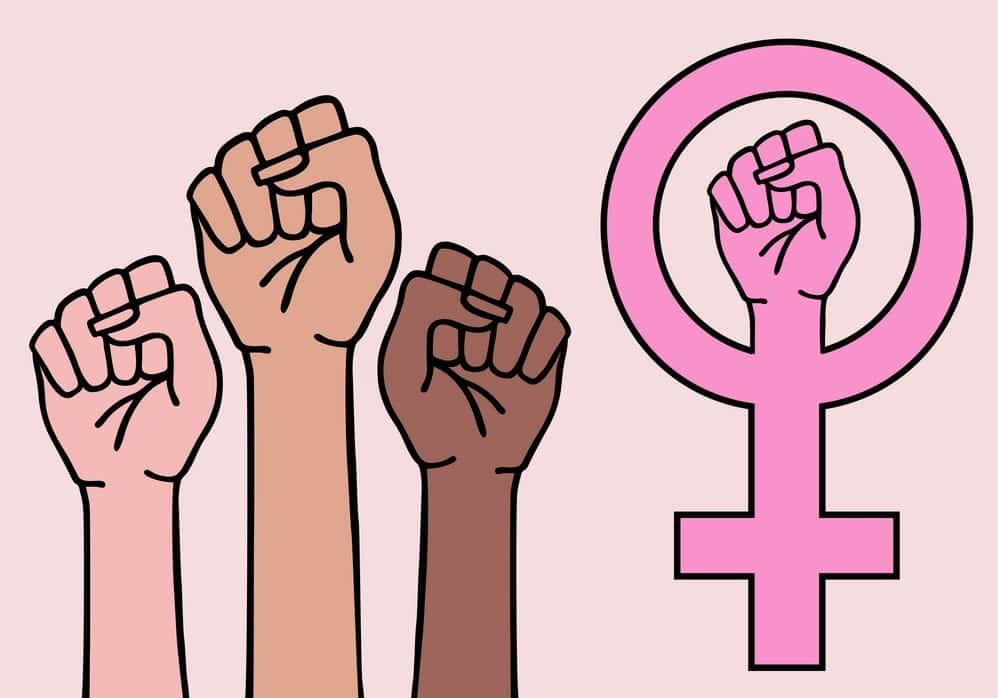What is feminism?
Feminism is characterized by the belief that all genders should have equal rights and opportunities across all sectors, including social, economic, political, and cultural domains. It addresses gender inequality shaped by societal norms, gender identities, sexuality, and expression through political activism and applying social and contextual theories. The movement began by advocating for and advancing women’s rights and interests. With time, feminism evolved to include a broader assessment of how gender and sexuality are constructed socially and performatively.
Feminism seeks to achieve gender equality not just in law but also in practice by attempting to put an end to sexual exploitation, sexism, and oppression.
Historical Background
The feminist movement began as a response to Western traditions that restricted women to the domestic sphere in the 19th century. Aimed at overturning social and legal inequalities, this movement took place in several waves, each comprising distinct goals. Although certain aspects of these waves tend to overlap, they are broadly characterized into four periods.
The First Wave (1848-1920)
The first wave of feminism began with the rapid industrialization and dissemination of liberal, socialist politics in the late nineteenth and early twentieth centuries. With a focus on women’s suffrage, feminists of this period sought equal opportunities and rights for women in property ownership, education, and employment. However, this wave was led primarily by middle-class, cis-gendered, white women and did not include women who faced oppression based on the intersectional lines of race, class, and gender.
The Second Wave (early 1960s – early 1980s)
With an increasing awareness of self-consciousness in light of the civil rights movements during this period, the second wave emerged as a radical advocation of reproductive and sexuality rights. Feminists of this wave recognized the varied social, cultural, and political contexts that influenced women’s experiences of exploitation and suppression and initiated a concentrated effort to incorporate diverse sexualities, inclusivity, and intersectionality into the movement.
The Third Wave (early 1990s – 2010s)
This wave was significant in deconstructing and redefining social ideas transmitted in society and through media of gender, womanhood, femininity, masculinity, and sexuality. Gender identity and sexual liberation formed the primary focus of feminists of this period.
The Fourth Wave (2013 – present)
The development of modern communication technologies led to the emergence of the fourth wave of feminism. This wave sought to propagate activism through widespread online mobilization, focusing on key issues like sexual harassment and rape culture. This period has been marked by several significant campaigns, such as the #MeToo movement, which gained widespread attention in 2017 to support survivors of sexual abuse in the workplace.
Comparison
| Concept | Main Focus | Key Difference from Feminism |
|---|---|---|
| Feminism | Gender equality and women’s rights | N/A |
| Egalitarianism | Equality for all people | Broader scope, not specifically focused on gender |
| Women’s Rights Movement | Legal and social rights for women | More focused on specific rights, less on overall societal change |
| Gender Equality Movement | Equal opportunities regardless of gender | Includes all genders, not primarily focused on women’s issues |
| Intersectionality | Interconnected nature of social categorizations | Considers multiple forms of discrimination, not just gender |
| Humanism | Human values and critical thinking | Philosophical approach, not specifically focused on gender issues |

